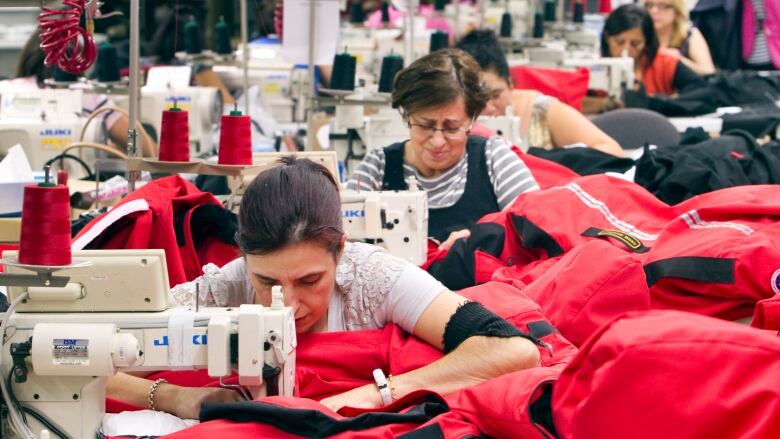Status of women report reveals bleak statistics for Manitoba
Women less likely to have full-time jobs, earn less than men and have high rates of sexual assault

There's not much for Manitoba women to celebrate in a provincial status of women report that came out on International Women's Day.
Manitoba has the highest rates of police-reported sexual assault in the country, and women in the province are less likely to be employed full-time, earn less than their male peers and are under-represented in the trades and leadership roles, says the reportreleased Thursday.
The report from the Manitoba Women's Advisory Council, which works with the provincial Status of Women Division, points to 2016 statistics that say the province has the highest rate of police-reported sexual assaults of any province in Canada.
About 109 people per 100,000 reported being sexually assaulted to police, data from 2016 says. The national rate is 58 per 100,000.
The report says there was no available data on whether Indigenous women were over or under-represented in those numbers.
Rochelle Squires, the Manitobaminister responsible for the Status of Women,spoke at a luncheon for the report's launch on Thursday.
She said improving circumstances for survivors of sexual violence and reducing the prevalence of sexual violence is top of mind for the government.
But Squires couldn't say whether there would be any provincial funding committed to tackling the problem, instead saying to stay tuned for the budget.
"We absolutely have the highest incidence of police-reported sexual violence in our city. What's most unsettling is we know only five per cent of survivors actually go to police to report," said Squires.
She did point to the federal government taking leadership on that issue, specifically improving mechanisms by which women can report sexual assaults.
Squires was at a national meeting on the status of women in November with top police officials to talk about a federal program that would allow women to report sexual assaults to third-party organizations such as community crisis centres.
"I was there specifically as the Manitoba minister saying, 'What can we do to bring third-party reporting for sexual assault survivors and sexual violence survivors here in Manitoba?' and we're making some progress in that regard," she said.
In terms of a financial commitment, she said"there isn't a specific envelope of money that would make that happen," but the province did recently announce funding for victims services that would be administered through the province's Justice Department.
One bright spot was that women in the province are more likely to hold a high school diploma than their male peers, but Manitoba's Indigenous women had a lower rate of high school graduation.
- Liberals spend billions to close gaps for women
- Budget targets women voters
- How Sweden swayed Canada on gender budget
In 2016, 88 per cent of women age25 to 64 had a high school diploma, compared with 83.1 per cent of men in the same age group.
Data for Indigenous women in Manitoba says about 72 per cent in that age group held a high school diploma, compared with 63 per cent of their male peers.
Squires said the province has some of the highest spending on bursaries and scholarships to help women continue their education.
"We know education is the fastest way for anyone to move out of poverty. As someone who was a high school dropout myself and was a teenage mother living in poverty, I know firsthand how an education can really accelerate a person moving out of poverty into a better lifestyle for our children," she said.
Newcomer women had the best numbers when it came to education, with 96 per cent having a high school diploma.
In fact, female newcomers were also much more likely to hold a post-secondary degree, diploma or certificate. About 84 per cent had finished a post-secondary program, compared to 61 per cent of all Manitoba womenand 45 per cent of Indigenous women in Manitoba.
Manitoba women are also less likely to work full-time, and when they do, they earn less than their male counterparts, the report says.
Using 2016 data, the report says the median income for women working full time was $44,818, with men earning $54,580.
Men earned more across every sector, with the greatest differences being in the trades, agriculture, sales and service, education, law and government services.












_(720p).jpg)


 OFFICIAL HD MUSIC VIDEO.jpg)
.jpg)



























































































